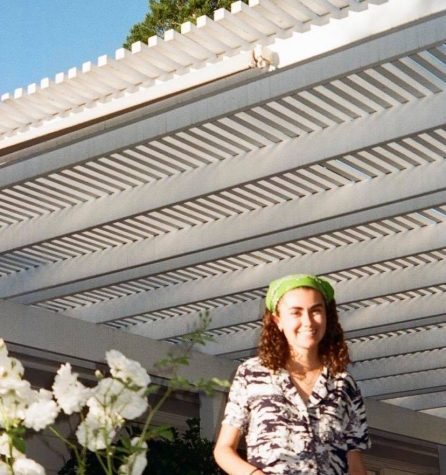“The Lost Leonardo” at the Landmark Lagoon Theater

September 9, 2021
Before the “Salvator Mundi” painting was found in 2005, the last known Leonardo da Vinci painting was discovered over a century ago. Today, the “Salvator Mundi” has disappeared.
In Andreas Koefoed’s 2021 documentary entitled “The Lost Leonardo”, the discovery, sale and ludicrousy of the “Salvator Mundi” are investigated with a cast of real life characters and plot twists too wild to be fiction. The “Salvator Mundi” painting is a simple image — often dubbed the “Male Mona Lisa” — as it depicts Jesus holding his right hand signaling the cross, with a clear orb resting in his left palm.
The film, which runs for an hour and 40 minutes, documents a once in a lifetime story of finding a lost work of art worth millions. Found by art collectors in New Orleans and originally painted between 1499 and 1510, the “Salvator Mundi” has become a worldwide phenomenon due to its authenticity (or lack thereof), change in ownership and record-breaking value. The documentary is part mystery, part art history lesson and part political and financial commentary as it follows the wild tale of the arrival and disappearance of the “Salvator Mundi.”
For what Leonardo da Vinci lacks in a physical presence, he makes up for in a cultural one. Born in 1452 and dead by 1519, da Vinci is an elusive character in the art world as the founder of the High Renaissance and one of the greatest painters to ever live. Most known for painting the “Mona Lisa” and the “Last Supper,” as well as the “Vitruvian Man” drawing, less than 25 attributed works of da Vinci’s exist today, adding to the mystery and prestige of the “Salvator Mundi.”
Despite clear patterns in da Vinci’s style and form, many critics in the “The Lost Leonardo” say that the “Salvator Mundi” should be highly criticized. Confounding factors could distort the painting’s authenticity: museums were quick to verify it as a legitimate attribution to da Vinci before many scholars had come to the same conclusion, restoration has greatly impacted the painting and some believe make it appear too much like da Vinci and its murky history draws questions about its origins.
Perhaps the most stark takeaway of the documentary is the enormous amount of money swirling around in the art world and how separate it is from devoted historians and lovers of art. A portion of the film takes place in Geneva, Switzerland at the Free Port where hundreds of billions of dollars worth of art and valuables are stored free from government watch dogs and tax collectors. The world’s most wealthy have transferred their assets to artifacts stored in the Free Port and similar venues where the work is locked away, leaving museums and art lovers to wonder about the whereabouts of the art and grieve for lost appreciation.
The “Salvator Mundi” represents this conundrum as it sold for an unfathomable $450 million to the Crown Prince of Saudi Arabia Mohammed bin Salman in 2017, setting the record for the most money ever spent on a painting — not to mention a painting with such peculiar authenticity. Now, the Crown Prince has kept the location and future of the “Salvator Mundi” a secret; he wouldn’t let the Louvre Museum display it in their most recent da Vinci exhibit despite a seemingly positive relationship with French president Emmanuel Macron. As one critic stated in the film, “it’s not just art history, it’s world politics.”
“The Lost Leonardo” prompts questions about the weight that the work of art holds as it stands now as a potential invention of grandeur. Art scholars are unlikely to determine whether the painting is a real da Vinci or not after almost two decades of scrutiny, but the art world convinced itself the authenticity of it didn’t matter long ago. The future of art, too, is in question as there is a depressing tone to the absurd and unimaginable journey the simple painting goes on to be held in the hands of a dangerous and powerful prince. Is there a monetary value that can be put on a piece of art that truly encapsulates what it makes someone feel? What good does it do to buy and rob it from the people who love it the most?
“The Lost Leonardo” suggests that the “Salvator Mundi” became a worldwide phenomenon that spiraled out of control with politics, finances and mystery. The documentary provides some material to draw your own conclusion about whether or not the painting is a real da Vinci, but leaves many questions unanswered. Tickets are available at landmarktheatres.com/minneapolis/lagoon-cinema.











